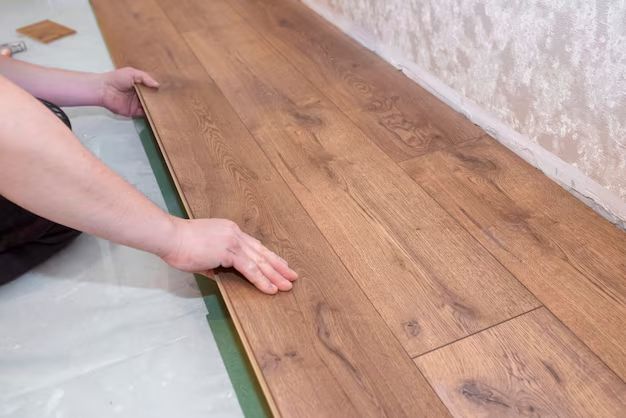Page Contents
Quick Answer
Whether it is better to recoat or refinish hardwood floors depends on the condition of the existing floor and the look you want to achieve. Rec oating can provide a refreshed look if the existing floor is in good shape. Refinishing completely sands down the floor for a like-new appearance but is more costly and disruptive.
Should I recoat or refinish?
Here are some guidelines on choosing between recoating and refinishing hardwood floors:
Recoat when:
- The existing finish is worn but not damaged down to the bare wood
- You want to refresh the look without removing much floor material
- There are only minor scratches, cloudiness, or worn areas
- You want an affordable, easy refresh that takes less time
Refinish when:
- The wood is exposed from deep scratches or gouges
- There is cupping, crowning, or separation between boards
- You want to completely change the color or finish
- Heavy repairs are needed like pet urine stains
- You want a like-new floor with full sanding and finishing
Key differences
| Recoating | Refinishing | |
|---|---|---|
| Process | Clean, degloss, apply new coats of finish | Sand down to bare wood, stain, and apply finish |
| Cost | $$ | $$$ |
| Time | 1-2 days | 5+ days |
| Dust and disruption | Minimal | Major |
| Floor removal | Little to none | Sands down 1/32″ or more |
The recoating process
Recoating hardwood floors involves applying new protective coats of polyurethane or other finish without removing the existing finish:
Prep work
- Clean the floors thoroughly to remove dirt, debris, wax buildup
- Lightly degloss the existing finish with abrasives
- Tack cloth floors to remove dust
Apply new finish
- Apply 2-3 thin coats of water or oil-based polyurethane
- Lightly sand between coats
- Use a paintbrush, roller, t-bar, or lambswool applicator
- Let dry 12-24 hours between coats
Recoating can cover scratches, restore gloss, and provide renewed protection for an existing floor. But discoloration or damage that penetrates deep may require spot repairs or full refinishing.
The refinishing process
Refinishing hardwood floors involves sanding the wood down to bare wood and applying stain and protective finish:
Sanding
- Sand floor with coarse 36-40 grit to bare wood
- Vacuum up all dust
- Progressively finer sanding with 60-120 grit screens
Repairs and staining
- Fill gouges, replace boards, sand repairs flush
- Apply wood putty in holes and gaps if desired
- Stain floors if desired for new color
- Let stain dry fully
Applying finish
- Apply 2-3 coats of polyurethane
- Lightly sand between coats
- Allow proper drying time between coats
Refinishing provides a like-new floor but requires tenants to fully move out during the lengthy process. The floor is sanded down 1/32 inch or more.
Factors that affect cost
The size of the flooring project impacts the costs of recoating vs refinishing:
Floor size
Larger square footage costs more for both processes. Refinishing has a higher per square foot cost.
Accessibility
Hard-to-access areas (stairs, corners, closets) cost more in labor for prep and finish work.
Floor type
Pre-finished floors require extra sanding to get down to raw wood. This adds cost for refinishing.
Staining
Staining adds significant cost for refinishing but is optional. Recoating does not involve staining.
Finish options
More durable finishes like polyurethane are more expensive than basic sealants. Multiple coats add cost.
Maintenance after recoating or refinishing
To maximize the life and look of your floors after recoating or refinishing:
- Wait 72 hours after finishing before regular foot traffic
- Avoid dragging furniture across floors during move-in
- Add felt pads under furniture legs
- Vacuum regularly and clean spills quickly
- Limit direct sunlight exposure which can cause fading
- Reapply protective finishes every few years
With proper care, recoating or refinishing can give hardwood floors many additional years of life. Talk to a professional flooring contractor to determine the best option for your needs.
Conclusion
Recoating hardwood floors provides a light resurfacing at a lower cost compared to a full refinishing. It is ideal for floors in good condition that need minor scratches or wear repaired. Refinishing involves completely sanding and refinishing the floor for a like-new look but at a higher cost and disruption. Factors like floor condition, project scope, and desired results help determine whether recoating or refinishing is the best choice. With proper maintenance, both processes can extend the beauty of hardwood floors for years.
